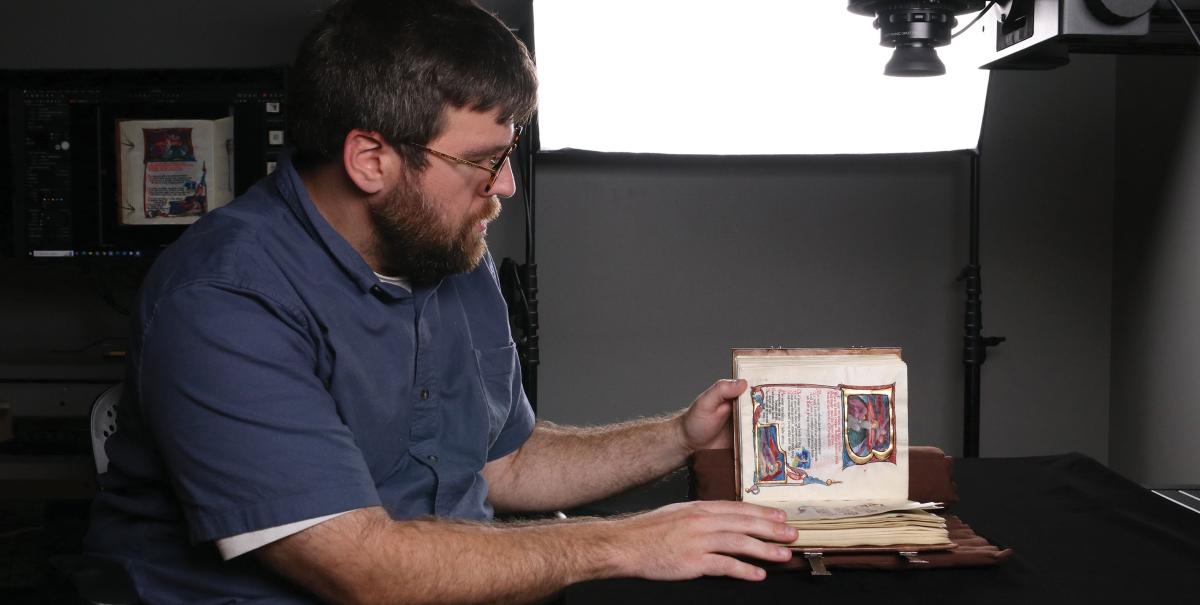
For still image materials, we calibrate our systems using reference targets and ensure that focus, exposure, white balance, and tonality are adjusted according to FADGI standards. After imaging, we conduct quality control to ensure that the digital images match the source materials as closely as possible. The final images are delivered in standard color spaces with the appropriate profiles embedded.
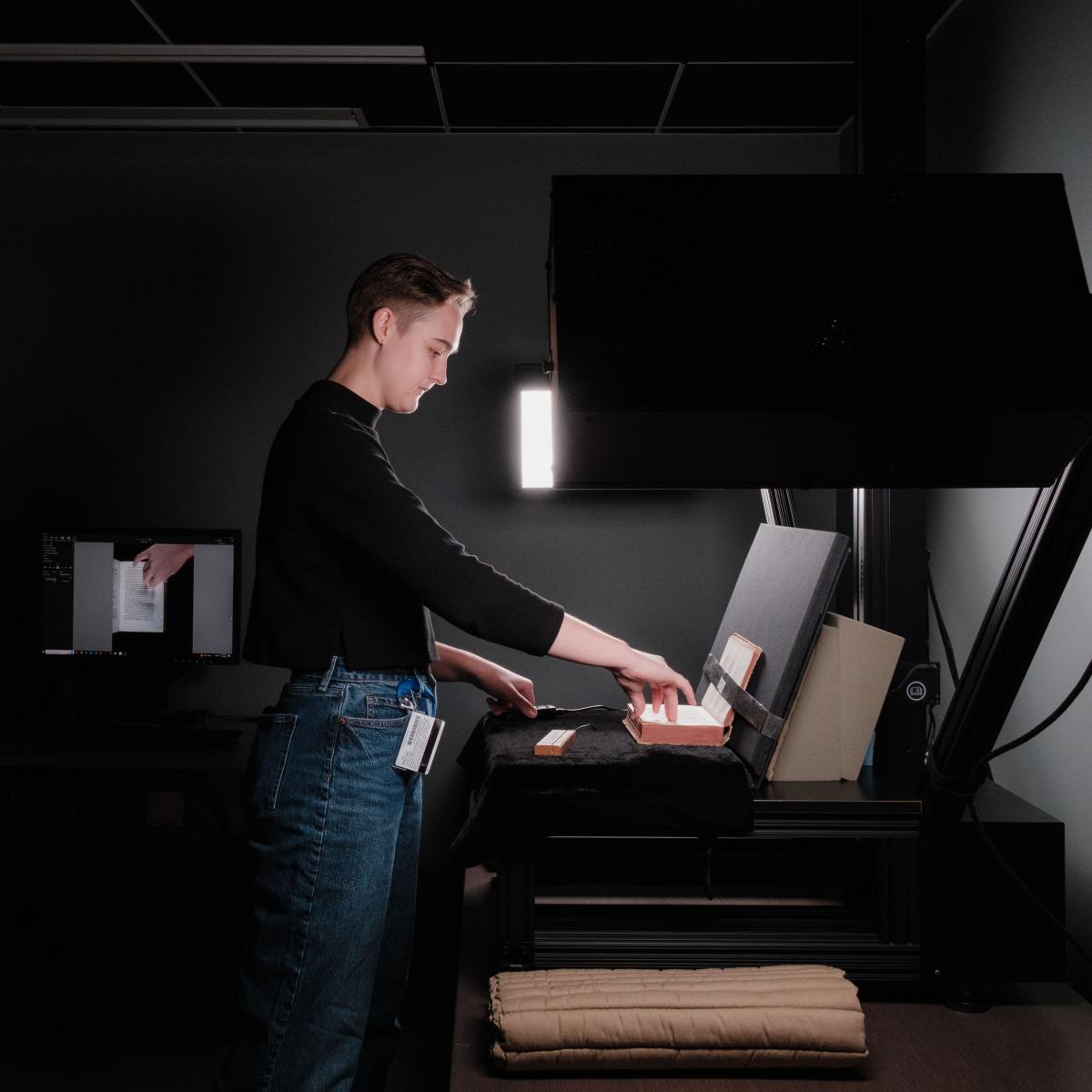
Phase One iXH Camera System with Digital Transitions Atom Station // Digital Transitions Photon Lights
Bound and unbound materials, photographic prints, and transmissive materials (negatives, slides, glass plates, etc.) are digitized with the iXH 150 MP Camera System.
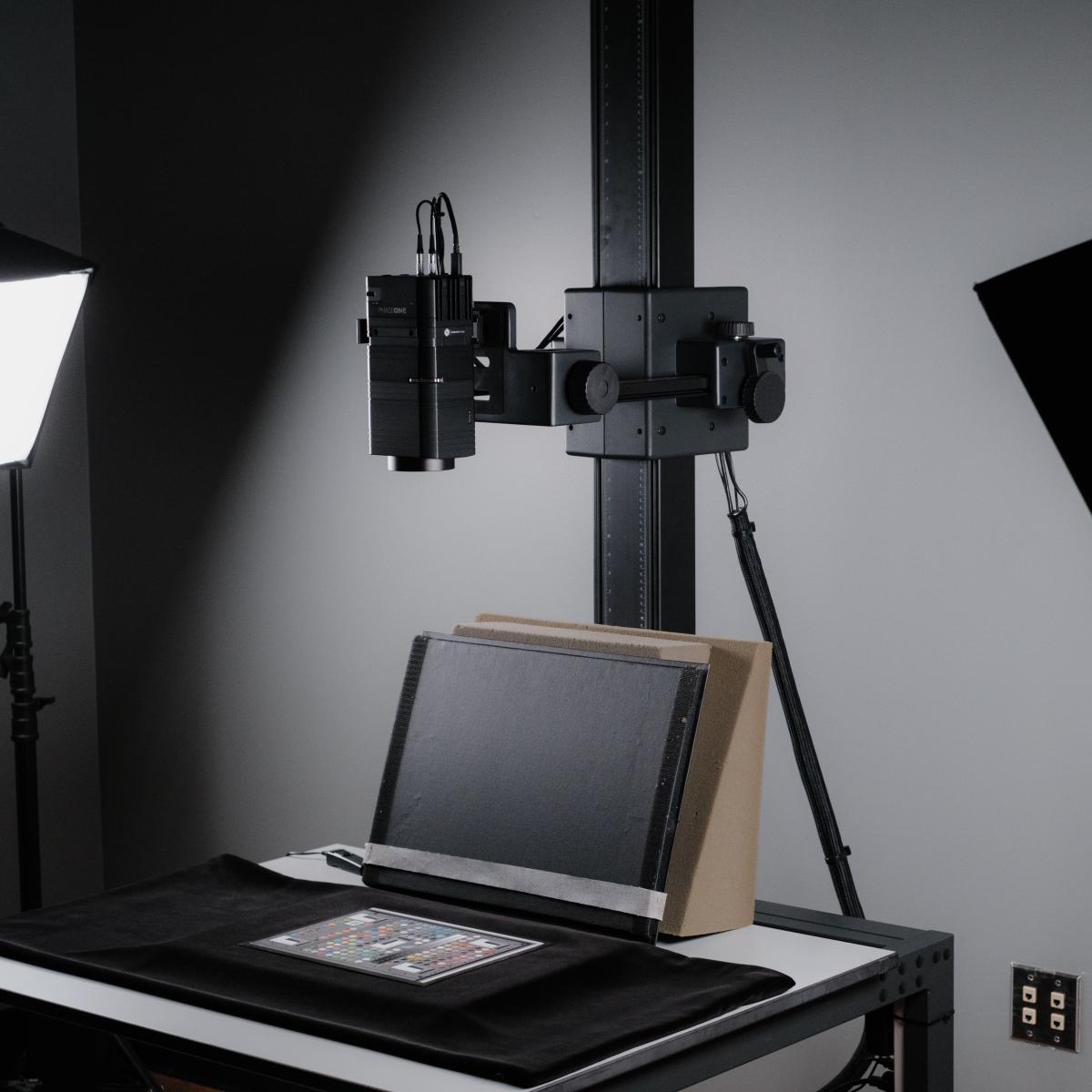
Phase One iXH Camera System // Kaiser Repro RSP 60” Stand with Motorized Column // Westcott Flex Lights
Bound and unbound materials that include rare books, manuscripts, and photographic prints are digitized with the iXH 150 MP Camera System.
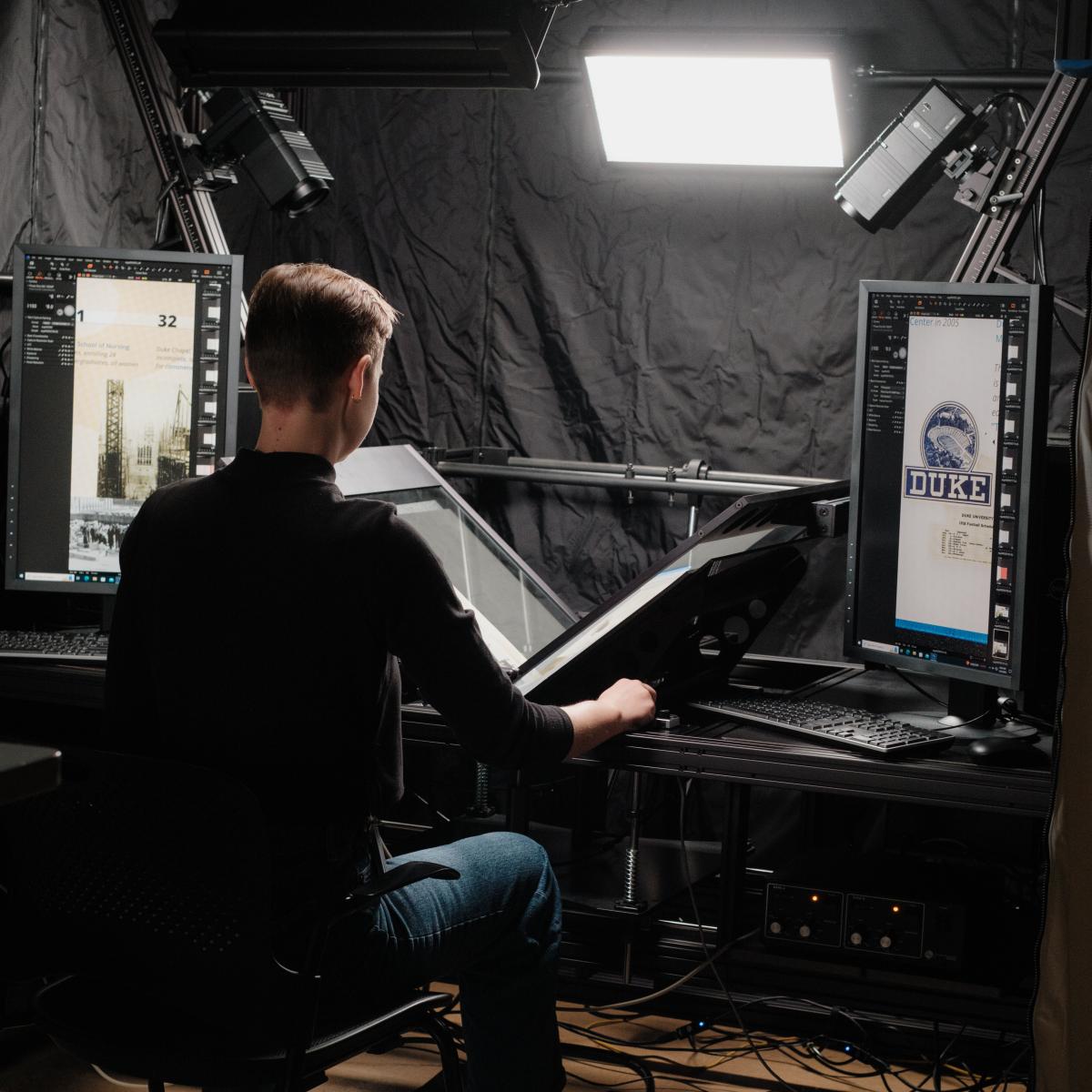
Phase One iXG Camera Systems with Digital Transitions BC100 Capture Stand // Digital Transitions Photon MK II Lights
Bound materials can be digitized with this apparatus that includes two Phase One iXG 100 MP Camera Systems. The rare book module in the BC100 ensures that bound materials are carefully raised towards the glass with a controller.
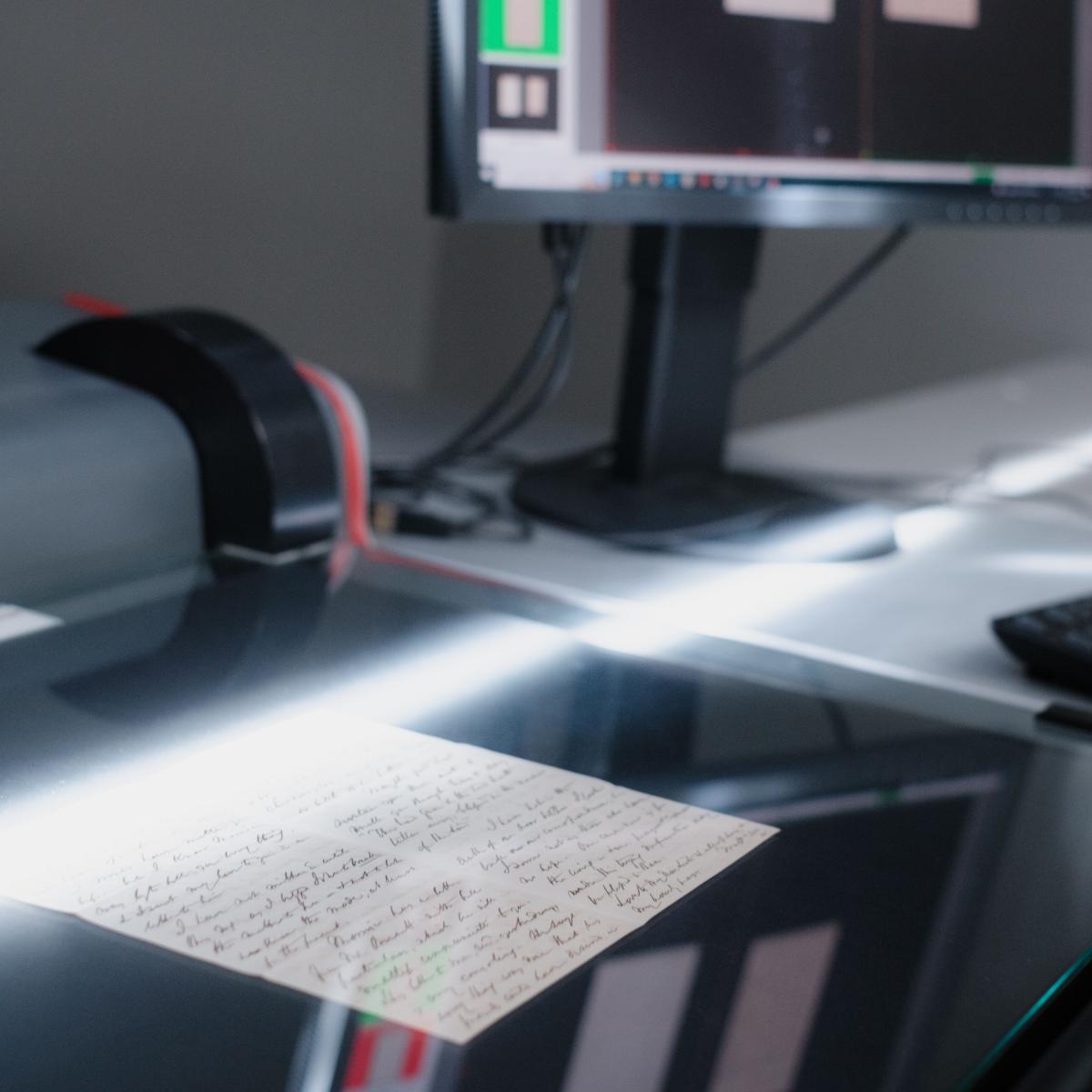
Zeutschel 14000 Scanner
Unbound modern materials and historical materials in robust condition can be scanned with the 14000 Planetary Scanner. Materials can be scanned on the scanning platform with or without the glass plate flattening the item.
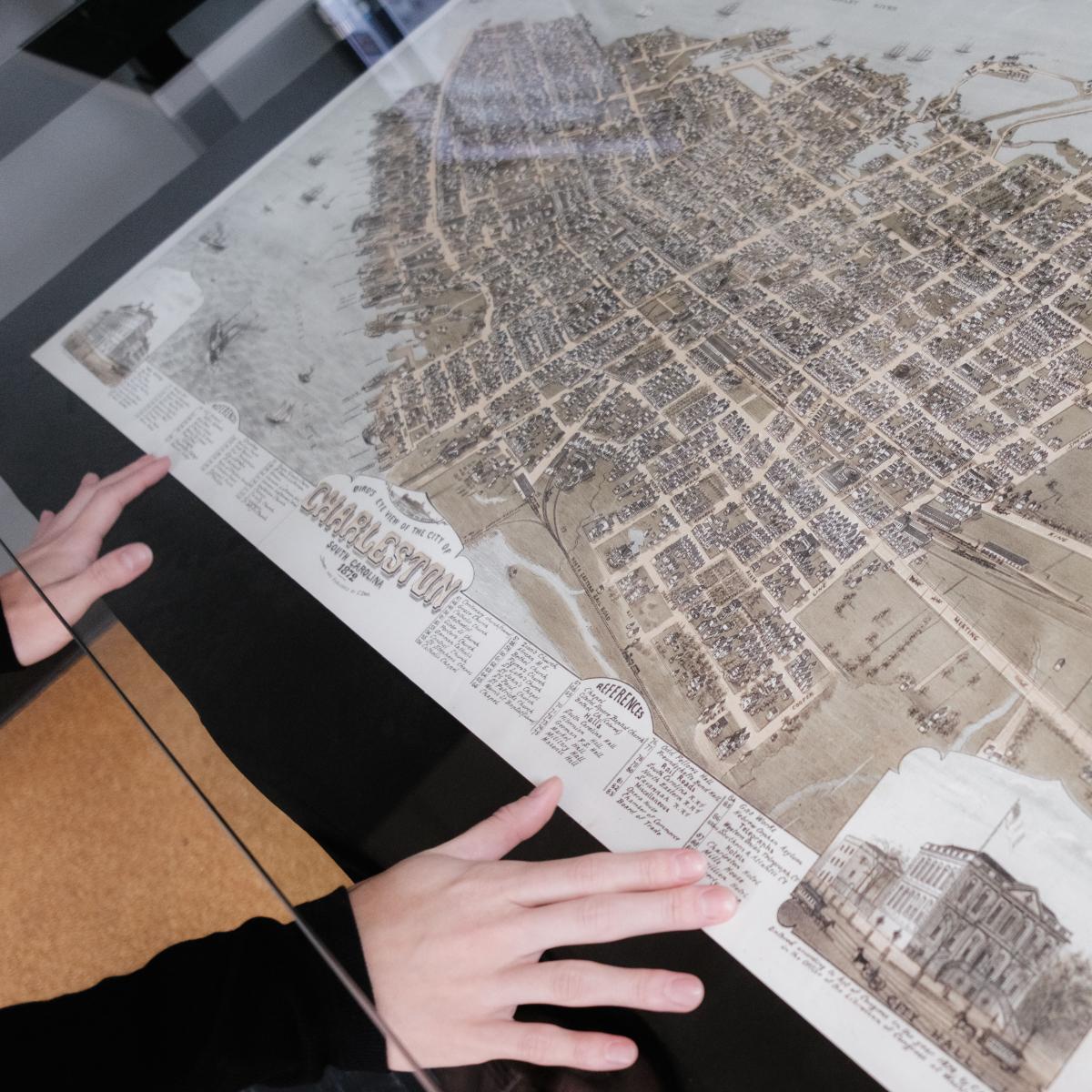
Zeutschel OS Q0 Scanner (A0 Copyboard System and Vacuum Tabletop)
Standard size and oversized materials that are unbound can be scanned with the OS Q0 Scanner. Materials are captured on the platform with the glass or via the vacuum tabletop with variable suction (without glass).
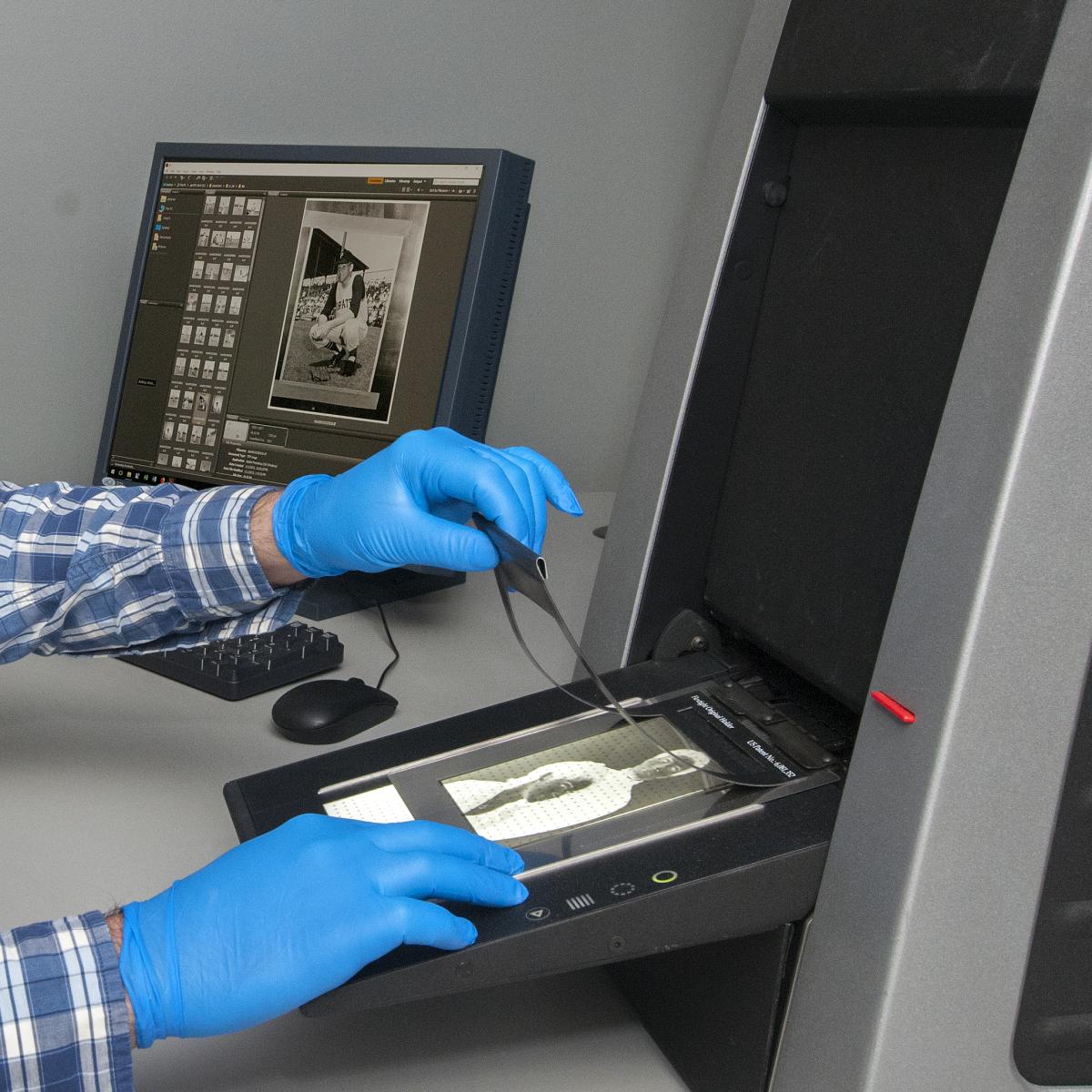
Hasselblad Flextight X5 Film Scanner
A variety of transmissive materials (film negatives, positives, and slides) can be scanned using the Flextight X5 Scanner. Provided that the film is pliant and in good condition, the X5 scanner is capable of scanning up to 8000 ppi. For film that is brittle or nonstandard sized, the DPC uses the Digital Transitions Atom Station with Phase One iXH Camera.
GoldenThread FADGI 19264 Target
The FADGI 19264 Target is used to measure color accuracy and registration, light uniformity, white balance, sampling efficiency, and noise. As part of our digitization workflow, a target is captured at the beginning of each imaging session. Target files are measured using GoldenThread NXT software to ensure compliance with FADGI standards.
Software
- Capture One Cultural Heritage
- FlexColor
- Omniscan
- GoldenThread NXT
- Adobe Acrobat, Bridge, Photoshop
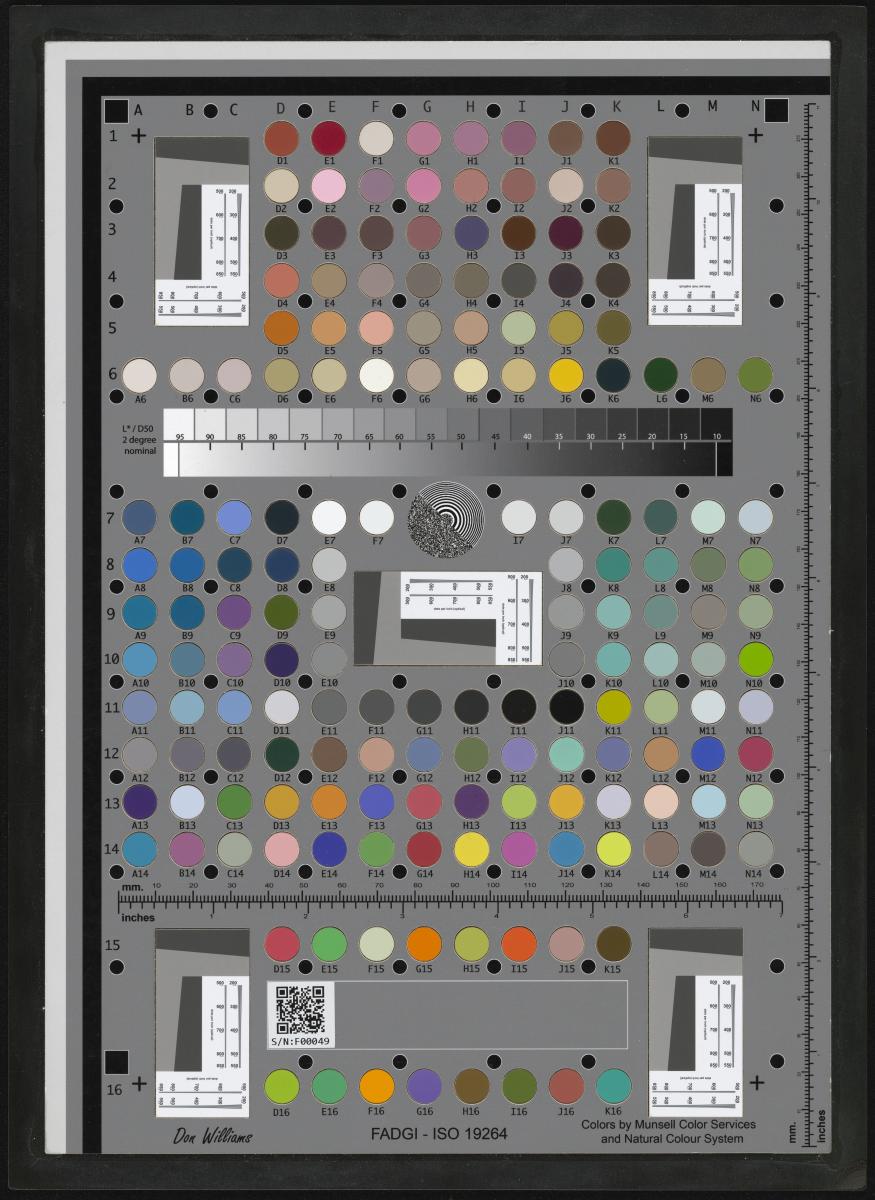
Disclaimer: The equipment and software listed above is a reflection of tools currently used in the Digital Production Center based on Duke University Libraries’ collection types and digitization needs. This list should not be interpreted as an endorsement of any manufacturer’s product.
Format and Material Type
Legal size, letter size, and smaller paper-based materials:
- Bound and unbound manuscripts
- Books
- Broadsides
Large paper-based materials:
- Architectural drawings
- Blueprints
- Maps
- Posters
- Newspapers
Early Manuscripts:
- Papyri
- Scrolls
Photographic formats:
- Contemporary
- Historic
- Photographic sheet and roll film, including 35 millimeter and up to 8×10 inches
Output Files
Photographs:
8-bit tiff (min. resolution 600 ppi), jpg, pdf
Printed material:
8-bit tiff (min. resolution 600 ppi), jpg, pdf
Transmissive material:
16-bit tiff (resolution based on size of item), jpg, pdf
Other Considerations:
Resolution is largely based on the size of the original item. The Digital Production Center refers to FADGI guidelines for resolution. Generally, if the original item exceeds A0 size, the Digital Production Center can stitch multiple images to one composite image. Please consult with the Digital Production Center staff about any effects the stitching process may have on overall image quality. Oversized materials may be digitized at 300 ppi.
Information updated February 2025

